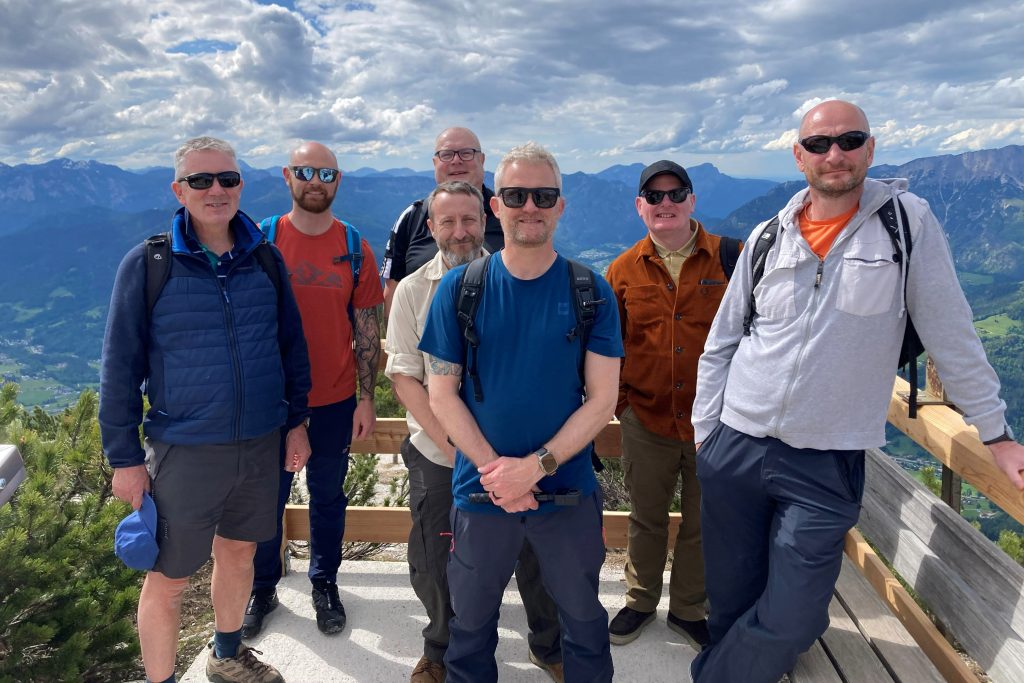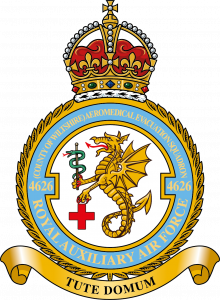From 17-20 May, 7 members of the RAux AF from 4626 AE Sqn attended a Force Development event to Germany. The aim being to consider significant events in WWII and the role played by the RAF.
On 17 May our first serial was the Waldfriedhof Cemetery in the centre of Munich to view the 2nd WW graves. In total there are 41700 graves on site. Although not all military, over 1200 were personnel who had been POWs at Dachau Concentration Camp, which we happen to be visiting later in the trip. Understandably, the cemetery was a peaceful place and extremely well presented. Presentations were carried out by Sqn Ldr Craig Staniforth on the tactics used by the RAF during the 2nd WW, followed by a very informative presentation by Flt Lt Ben Hayman on comparing the bombing missions of WW II to present day. We also discussed weapons, legality, and navigation aids again from WWII.
On Sat 18 May, first thing, we headed towards ‘Kehlstenhaus’ or synonymously known as the Eagles Nest. It was a gorgeous early summer’s day as we travelled towards the Bavarian Alps. We were surrounded by the most fantastic scenery with clear blue skies with snow-capped mountains.
After a 2-hour drive through breath taking scenery, we arrived at the Eagles Nest car park to begin our accent to the top of the mountain. Dominating the Austrian border skyline at 1834 meters and once a retreat and party venue for Adolf Hitler and his dignitaries, the temperature started to drop. The site would only grant us access via a steep 15-minute bus ride, This lead to a 150 meter damp and eerie pedestrian tunnel ending in a 100 meter gold lined lift. As we travelled to the top, we commented on the number of famous personnel who would have used this facility, from numerous German Generals to General Eisenhower, himself, the Supreme Commander of the Allied Expeditionary Force Europe, who insisted that the place should be kept for historical reasons. Now serving as a restaurant to many visitors, the Eagles Nest will remain one of the Nazi Germanic legacies, with walls that we all wish could talk.
On 19 May the team travelled to Dachau Concentration camp. Visiting this site was a profound and sombre experience. The stark remnants of the camp, from the barracks to the crematorium, served as a powerful reminder of the atrocities committed during the Holocaust. Walking through the grounds where so many suffered and died, we felt a deep sense of sorrow and respect for the victims. This visit reinforced the importance of remembering history to ensure that such horrors are never repeated. It was an educational and emotional journey that underscored the resilience of the human spirit and the necessity of standing against hatred and oppression in all forms. Dachau was designed to accommodate 6000 prisoners. However, by the end of WWII it was holding over 60,000! Presentations were carried out by Sgt Keith Voysey who focused on comparing Dachau with Guantanamo Bay, and with Sqn Ldr John CC presenting an interesting comparison between the Nazi regime and Al Qaeda of today and the role the RAF had to play.
On the final day – 20 May – we travelled down to Durnbach. Nestling in the fertile agricultural land below the Bavarian Alps lies the location of a Commonwealth War Cemetery. Here the neat rows of Military Gravestones are the last resting place of fallen warriors. Predominately but not exclusively RAF, 2934 young men from many nationalities and creeds gave their lives for the cause of freedom and to protect us from tyranny. In such a beautiful sun dabbled setting with the gentle chorus of birdsong in the background we came to pay our respects and reflect on how privileged we, as members of the RAF Medical Reserves, were to be in their presence and to acknowledge our debt of gratitude for their courage and service. Presentations were carried out by WO Chris Smith and FS Mick Aynsley. WO Smith facilitated the discussion on POWs and how they dealt with the trauma and challenges and how support this has changed from then until the present day. FS Mick Aynsley then discussed the differing effects on mental health and treatment provided in WWII, again, to the present day.
The war graves were extremely well kept and stood proud in the Bavarian sunshine. The average age of the soldier and aviator was 25 with the crews from various aircraft grouped together. The wording engraved on the headstones gave you a sense of pride and feeling of gratitude. It will be a day to remember – ‘Our freedom to acclaim. Let not his sacrifice be in vain’.
Although we did cover a lot of ground in 4 days the FD trip, it was acknowledged by all that it was informative, enjoyable, and inspirational.
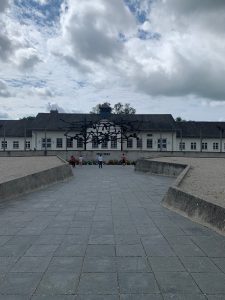
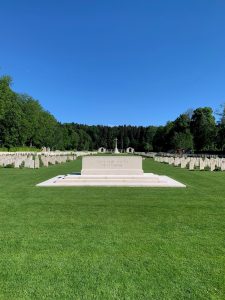
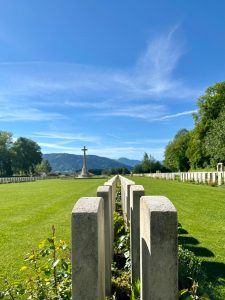
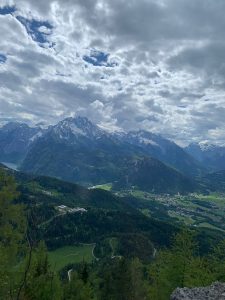
4626 Squadron is based at RAF Brize Norton in Oxfordshire. Medical Reserves provide personnel to the RAF and Defence Medical Services operational medical capabilities, including aeromedical evacuation and pre-hospital, primary and secondary healthcare. Personnel are mostly recruited from the NHS and private healthcare sector from across England and Wales. The Squadron has deployed personnel to all major operations since its formation and also humanitarian ops such as assisting in the treatment of Ebola victims in Sierra Leone and hurricane victims in the Caribbean.
Find out more below:

